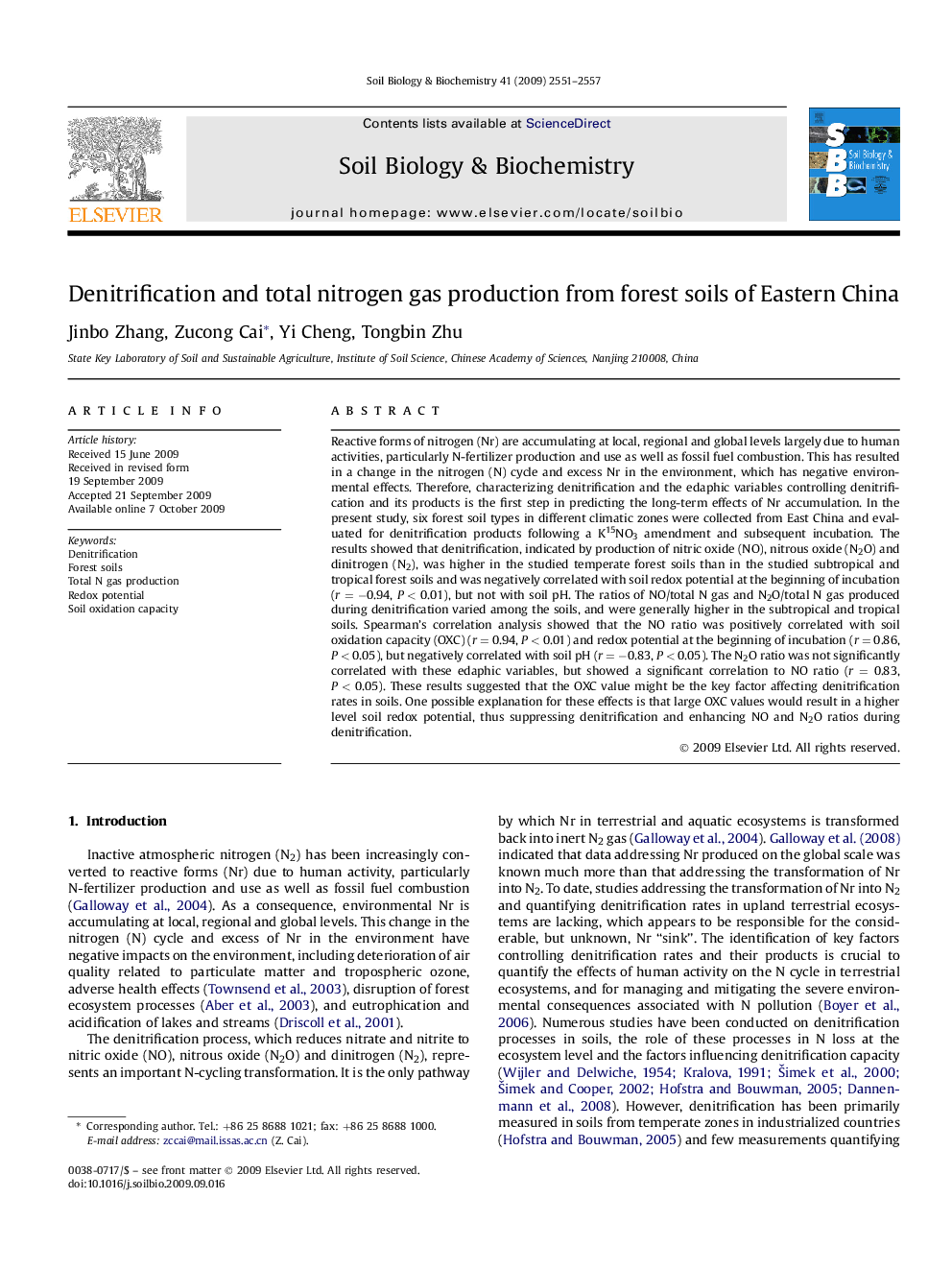| Article ID | Journal | Published Year | Pages | File Type |
|---|---|---|---|---|
| 2025792 | Soil Biology and Biochemistry | 2009 | 7 Pages |
Reactive forms of nitrogen (Nr) are accumulating at local, regional and global levels largely due to human activities, particularly N-fertilizer production and use as well as fossil fuel combustion. This has resulted in a change in the nitrogen (N) cycle and excess Nr in the environment, which has negative environmental effects. Therefore, characterizing denitrification and the edaphic variables controlling denitrification and its products is the first step in predicting the long-term effects of Nr accumulation. In the present study, six forest soil types in different climatic zones were collected from East China and evaluated for denitrification products following a K15NO3 amendment and subsequent incubation. The results showed that denitrification, indicated by production of nitric oxide (NO), nitrous oxide (N2O) and dinitrogen (N2), was higher in the studied temperate forest soils than in the studied subtropical and tropical forest soils and was negatively correlated with soil redox potential at the beginning of incubation (r = −0.94, P < 0.01), but not with soil pH. The ratios of NO/total N gas and N2O/total N gas produced during denitrification varied among the soils, and were generally higher in the subtropical and tropical soils. Spearman's correlation analysis showed that the NO ratio was positively correlated with soil oxidation capacity (OXC) (r = 0.94, P < 0.01) and redox potential at the beginning of incubation (r = 0.86, P < 0.05), but negatively correlated with soil pH (r = −0.83, P < 0.05). The N2O ratio was not significantly correlated with these edaphic variables, but showed a significant correlation to NO ratio (r = 0.83, P < 0.05). These results suggested that the OXC value might be the key factor affecting denitrification rates in soils. One possible explanation for these effects is that large OXC values would result in a higher level soil redox potential, thus suppressing denitrification and enhancing NO and N2O ratios during denitrification.
